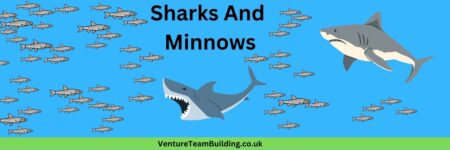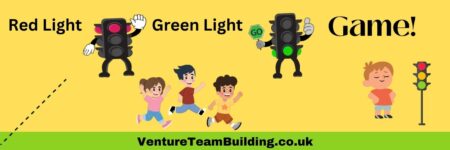Orienteering is a sport in which participants compete and navigate round a series of checkpoints (control points) using a large scale map and relying heavily on teamwork. Although the fastest team back wins, navigational skills are more important than running speed – the activity can be performed both for fun and competitively and is suitable for all ages.
In this article we are going to focus on how you can deliver your own introductory Orienteering experience when working with children and how to do this on a budget (less than $25).
Orienteering can take place in the school grounds, woodland or camp (if you have enough space). The basic criteria are that all maps must be large scale and accurate, the control points must be identifiable by skill and not luck, and the emphasis should be on navigating the course using the map rather than participants stumbling upon control points.
Before we begin, here are just two basic Orienteering terms you should be made aware of:
Control point
A marker (usually orange and white) used to mark features on an orienteering course – usually with clipper or punch attached to mark control point as proof of visit.
Course
A sequence of control points marked on the map and ground which have been visited in a given order in an orienteering event
Equipment to get started
- Master Map displaying the location of all control points
- Master answer sheet – displaying all control punch patterns for each control point
- Course maps (I suggest 3 x maps with 6 different control points on each and 2 spare)
- 20 x Control Point markers (£16/$25)
- 20 x Control Punches (£80/$126 or print your own)
- Answer sheets to stamp a visit to the control point (these can made on the computer and printed)
- Example maps (road maps, world map, ordnance survey maps etc). Either purchase or do a google search and print off what you find.
The above can be purchased through an online supplier. You should be able to put together a basic Orienteering kit for less than £120/$190.
If you’re in the UK, I recommend purchasing from the British Schools Orienteering or Bishops
Need to go cheaper?
Instead of purchasing the control punches, just purchase the control markers (for around £16/$25) and write on each point a number and a letter. Instead of punching in a pinned pattern, competitors now need to find a letter at each control point.
So when searching for control point 1, they find the letter R and write this down. For each route, you can also add an anagram with a word relating to Orienteering. Once they have visited all the control points and collected all the letters, they then need to figure out what the anagram is. You could use Orienteering terms such as: Route, Course, Legend, Control etc
You can also make your own control points on the computer, print them and then laminate ready for use.
Getting setup
If you have a simple map of your grounds, use that to get started or you can even create your own on paint. Another option is to contact your nearest Orienteering club and ask them to come in and create a map for you.
Just make sure to include the following: viewed from an aerial point of view, out of bound areas are marked, it’s to scale and includes a key/legend for representing key features on the map.
Once you have a map ready, you can add the control points. You can begin by making it as simple of writing the number of each control point at the exact location on the map. Have a master copy with all control points marked and 3 additional courses with their own routes consisting of different control points.
Stay clear of putting your control points in any areas that particularly dangerous or hazardous. Also identify any out of bounds areas and ensure these are marked on the map and you brief the group on these before setting them off. You could also setup your courses based on difficulty – easy with control points spaced closely and hard with control points a distance apart.
Orienteering Activity Plan
Group Size: 8 to 15 ideally, but can be done with up to 20 participants. Split into smaller teams of 3-5.
Total Time: 70 mins
- 5 minute introduction
- 15 minutes for navigational skills
- 5 minutes for safety briefing and setup
- 40 minutes for main activity
- 5 minutes to Review
Introduction
Orienteering is a competitive sport where participants use a map to find their way to fixed control points. During the activity, participants will learn about the sport of orienteering and be taught fundamental map reading and navigation skills. They will then put these skills in to practice and work in small teams to complete an orienteering course.
Basic Skills
Discuss with the group, the different types of maps, the map features and how we use these.
- What’s the purpose of the map?
- What do they look like?
Explain to the group that a map can be anything that gives directions, e.g. a piece of paper with directions drawn on it.
Hand out some of the example maps you have (road maps, ordnance survey etc) and ask the group to review these and identify anything they notice. They should come up with the following: maps are always viewed from an aerial point of view, they include keys/legends, they are to scale etc
Sit the group down and explain that they will now learn some basic navigation techniques, including map setting and thumbing the map.
The fundamental skill in orienteering is orientating the map (also known as ‘setting the map’). Orientating the map refers to turning the map so it faces the same direction as the user. Show participants how to set the map, using a grid of cones laid out on the ground. Move around the course, emphasising the importance of setting the map at each control point.
Split your group into smaller teams of 3-5. Ensure each group has a map. Next ask them to find where they are on the map. Get them to identify any features around them and locate these on the map.
Use this as a link to introduce thumbing the map…
‘Thumbing the map’ simply refers to using your thumb to mark your position on the map, rather then trying to mentally remember your position. Participants can also use their thumb to trace movement from one location to the next.
Once all groups have found their current location, ask them to orientate and thumb the map as you move to a nearby control point.
Once you are at the control point, review how they found that exercise. Whether they managed to follow their movement using their thumbs and whether they orientated their maps.
Next, explain the map in full detail, this includes: the key, buildings, roads and out of bounds areas.
Show the group on the map where you will base yourself for the duration of the activity. This is where they need to return to, once they have completed each course, they need help or time is ending. This should be somewhere that looks over as much of the orienteering area as possible.
Control Points
Introduce the control point and how to mark that they have navigated to the correct location. Get them to review their route maps and identify the other control points.
State that each map will have different control points, so they will keep changing after they have completed each map. You will receive just one route at a time. The aim is to proceed to reach control points as quickly as possible, stamping their route card at each one.
After completing a route the group should return so you can check their answers. Upon successful completion of a route, they will receive a new route to complete.
Route Choice
Discuss with the group the importance of choosing a suitable route, and how important it is that all members of a team understand it.
Suggest to the group that reaching control points in a logical order will be much more effective than criss-crossing around the map.
Safety
Under no circumstance should participants enter an out of bounds area.
They must stay as a team at all times. Staying as a group prevents anyone getting lost. Additionally, if someone does get injured, then remaining in a group size of no less 3 allows for one person to remain with the injured person and the other to return back to the meeting point for help.
Be careful when crossing roads as there may be traffic. Remember “STOP, LOOK and LISTEN”.
When working with younger groups, I would add that I want them to return back to the meeting point every 15 minutes to make sure they’re okay.
Main Activity
Provide each group with a route map and answer sheet or route card. Teams will then begin the main activity, trying to complete as many routes as possible and returning after each one.
Try to give different routes to each group, you are guaranteed that one group will follow the other groups and then realise they have a different route completely.
It is important that you stay in the designated meeting point at all times. As each team returns, check if they are using the navigation techniques they have been taught, and how effective they are proving.
Extension Techniques
If you have enough time, and the group are excelling at the navigation techniques already learnt, then introduce some extension techniques.
These techniques can be introduced and coached as per map setting and thumbing the map.
Handrailing – a line feature on the map and ground followed to simplify navigation.
Attack Point – a large obvious feature to aim for close to the control point.
Aiming Off – Aiming to one side of the control point, on a line feature so you can then handrail it.
Collecting Feature – a feature beside a route/ control point that tells you that you have gone too far.
Reviewing and De-Brief
Discuss with participants the benefits of teamwork during the activity.
Review the navigation techniques learnt.
Suggested questions to ask in the review
What did you learn about Orienteering?
How important was teamwork during the activity?
Who did what in the group?
What’s one thing you learnt during the activity which you can take away?
Learning outcomes
- Decision making
- Navigation and map skills
- Teamwork
- Communication
Helpful Resources
British Orienteering have put together some free resources on their website that will get you setup in no time. Check out the following documents:
Orienteering Games and Challenges, and Orienteering for Schools manual (PDF).
Similar Team Building Activities:
Photo Hunt
Video Scavenger Hunt



